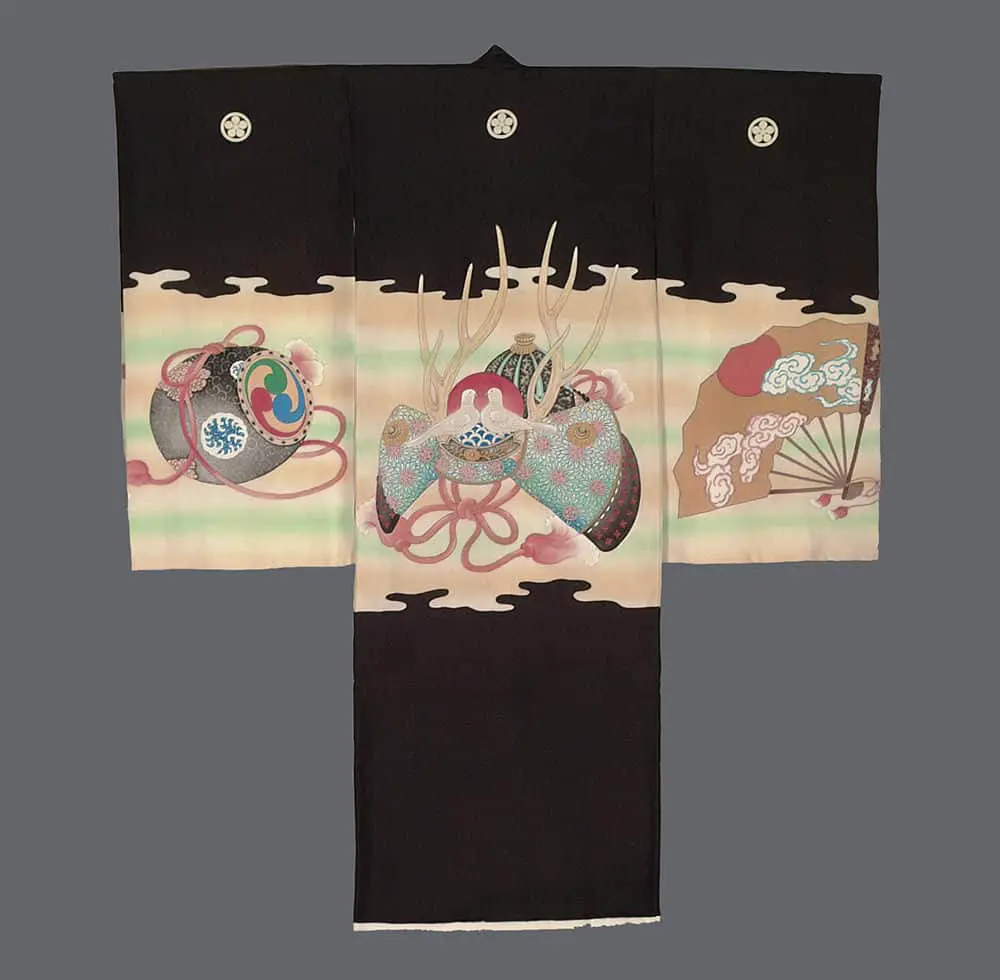This miyamairi kimono represents the pinnacle of ceremonial textile artistry, designed specifically for the sacred Shinto ritual of a baby boy's shrine visit. The garment's sophisticated yuzen dyeing technique and freehand painting create a narrative tableau rich with symbolic meaning and cultural significance. The composition is dramatically structured with a bold black upper section that creates visual weight and formality, while the cream and pale green lower portion provides a luminous foundation for the elaborate motifs. This stark tonal division reflects traditional Japanese aesthetic principles of ma (negative space) and the interplay between density and emptiness.
The central imagery revolves around classic symbols of masculine virtue and protection, most prominently featuring the kabuto (samurai helmet) as the focal point—a traditional emblem representing courage, honor, and the warrior's protective spirit watching over the child. The helmet's intricate detailing, with its characteristic maedate (front crest) and elaborate silk cords, demonstrates the masterful skill of yuzen artisans in rendering complex three-dimensional forms through textile art. Accompanying motifs include decorative fans and flowing ribbons that create visual movement across the composition, while the inclusion of doves introduces themes of peace and divine blessing. The stylized cloud formations and swirling decorative elements echo classical yamato-e painting traditions, creating a sense of celestial protection and auspicious fortune. This synthesis of martial symbolism with peaceful imagery reflects the Japanese cultural ideal of strength tempered by wisdom and compassion, making this kimono not merely ceremonial dress but a wearable prayer for the child's future character and destiny.
It measures 35 inches (89 cm) from sleeve-end to sleeve-end.
.avif)
























